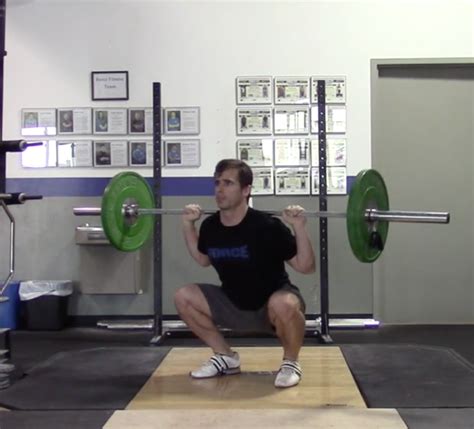Stuck on a strength plateau? What workout tweaks yield peak progress for men?

Breaking Through the Wall: Overcoming Strength Plateaus
Every man committed to the gym eventually faces it: the dreaded strength plateau. You’ve been lifting consistently, pushing hard, but suddenly, the weights aren’t moving up, reps aren’t increasing, and progress grinds to a halt. It’s frustrating, but it’s also a normal part of the strength journey. The good news? It’s not a dead end. With the right strategic tweaks to your workout, you can smash through that wall and continue making significant gains.
Why Do Plateaus Happen? Understanding the Basics
Before we dive into solutions, it’s crucial to understand why plateaus occur. Your body is an incredibly adaptive machine. Initially, it responds rapidly to new stimuli (the workout honeymoon phase). However, it quickly becomes efficient at what you ask it to do. Common culprits for plateaus include:
- Lack of Progressive Overload: Not consistently increasing the demand on your muscles.
- Overtraining/Under-recovering: Too much intensity without adequate rest and repair.
- Nutritional Deficiencies: Not consuming enough calories or the right macronutrients to support growth and recovery.
- Program Stagnation: Doing the same routine for too long, leading to adaptation.
- Poor Sleep/Stress Management: Critical factors often overlooked in strength gains.

Tweak 1: Master the Art of Progressive Overload – Beyond Just More Weight
Progressive overload is the fundamental principle of muscle growth, meaning you must continually challenge your muscles. But it’s not just about adding 5 lbs to the bar every week indefinitely. When weight stalls, consider these variations:
- Increase Reps or Sets: If you can’t add weight, try to do one more rep or an extra set with the current weight.
- Decrease Rest Times: Shorter breaks between sets increase the intensity and metabolic stress.
- Improve Exercise Form: Better form allows you to target the muscle more effectively and often lift more safely.
- Increase Time Under Tension (TUT): Slow down the eccentric (lowering) phase of a lift to put muscles under stress for longer.
- Increase Frequency: If you’re only training a muscle group once a week, try twice a week.
Tweak 2: Implement Periodization and Strategic Deloads
Your body can’t redline forever. Periodization involves structuring your training into cycles with varying intensity and volume. A strategic deload is a short period (typically a week) where you significantly reduce the weight, reps, or volume, allowing your body to fully recover, repair, and supercompensate.
- How to Deload: Reduce your usual weight by 40-60% or your total volume by 50-70% for a week. Focus on perfect form and light movements.
- When to Deload: Every 6-12 weeks, or when you notice persistent fatigue, joint pain, or significant performance drops.

Tweak 3: Shake Up Your Exercise Selection and Incorporate Unilateral Work
Doing the same exercises indefinitely can lead to muscle adaptation and neglected stabilizers. Sometimes, simply changing the stimulus is enough to kickstart new growth.
- Vary Your Main Lifts: If you always squat with a barbell, try hack squats, leg presses, or front squats for a cycle. If bench press stalls, switch to dumbbell press, incline press, or dips.
- Introduce Unilateral (Single-Limb) Training: Lunges, single-leg RDLs, single-arm rows, or single-arm overhead presses can expose and correct strength imbalances, improve stability, and provide a novel stimulus.

Tweak 4: Optimize Nutrition, Hydration, and Recovery
You can’t build a strong house without proper materials. Your gains are built outside the gym just as much as inside it.
- Adequate Protein: Aim for 1.6-2.2 grams of protein per kilogram of body weight to support muscle repair and growth.
- Sufficient Calories: Ensure you’re in a slight caloric surplus if your goal is muscle gain. Under-eating is a common plateau cause.
- Quality Carbs and Fats: Carbohydrates fuel your workouts, and healthy fats are crucial for hormone production.
- Hydration: Dehydration significantly impairs performance and recovery. Drink plenty of water throughout the day.
- Sleep: Aim for 7-9 hours of quality sleep per night. This is when your body truly recovers and repairs.
- Stress Management: Chronic stress elevates cortisol, which can hinder muscle growth and fat loss.

Tweak 5: Explore Advanced Training Techniques (Use Sparingly)
Once you’ve mastered the fundamentals, advanced techniques can provide an extra kick, but use them judiciously to avoid overtraining.
- Drop Sets: Perform a set to failure, immediately reduce the weight, and continue for more reps.
- Supersets/Giant Sets: Perform two or more exercises back-to-back with minimal rest to increase intensity.
- Rest-Pause Training: Perform a set, rest briefly (10-20 seconds), and perform a few more reps with the same weight.

The Path Forward: Consistency and Smart Adjustments
Breaking through a strength plateau requires a holistic approach, combining smart workout programming with diligent attention to recovery and nutrition. Don’t be afraid to experiment, listen to your body, and make adjustments. The journey to peak progress is rarely a straight line; it’s a series of strategic detours and smart choices that ultimately lead to greater strength and resilience. Stay consistent, stay smart, and keep pushing your limits.









